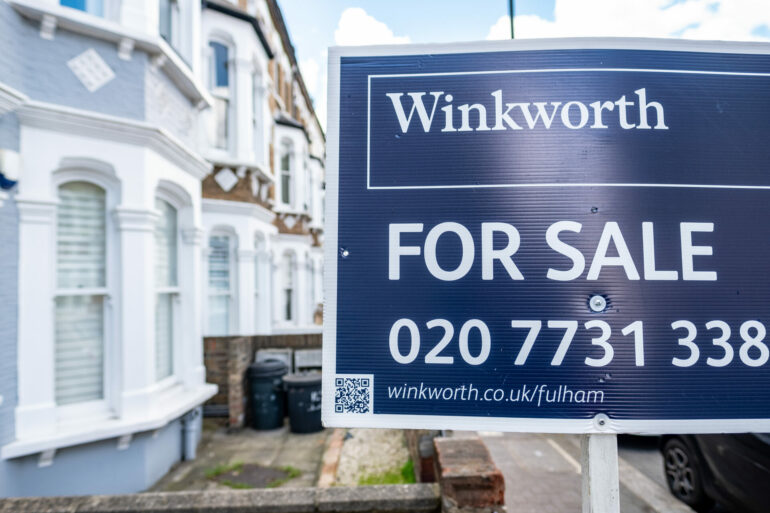Prime London’s housing market witnessed a decline in sales values and activity, according to analysis by independent property analysts, LonRes. The average achieved selling prices decreased by 3.1% annually, marking the most significant drop since May 2021. In contrast, prime London lettings saw increasing rental values.
Transactions in September were down by 24.3% compared to the same month last year. However, average values across prime London now stand just 1.0% above their average between 2017-2019. An examination of future trends suggests further reduction in activity. Despite only a 2.0% decline in new sales instructions compared to September 2022, the number of properties going under offer plummeted by 27.4%.
Interestingly, properties with price tags above £5m experienced a less severe impact. Sales in this category were 13.9% lower than the previous year, while new instructions saw a modest increase of 1.0%. Furthermore, the number of these high-end properties going under offer remained steady.
The rental market continues to flourish, with a 9.3% growth rate in September, pushing values to 31.1% above their pre-pandemic average. However, the number of agreed lets dropped by 7.7% annually, while new letting instructions rose by 20.0%. LonRes emphasised the strong rental demand, noting that many properties are rented without listing, hence not reflected in their data.
As the autumn selling season commences, activity did surge compared to the summer’s subdued levels. However, when compared to previous years, the market’s performance seems slightly subpar. LonRes’ historical data suggests that September 2023 ranks 6th out of 10 for new instructions and 7th for sales, indicating that the year might be perceived as underperforming due to the high performance of 2021 and 2022.
Several factors could explain the declining demand for prime London property. Notably, changes in employment patterns post-pandemic have reduced the necessity for many to reside or commute to London. Data from Transport for London shows a plateau in Underground and Bus travel at less than 80% of 2019 levels. Moreover, while international travel has rebounded, overseas buyer demand in the sales market remains subdued, possibly due to economic uncertainties and perceptions of an unwelcoming business environment in the UK.
All property price bands witnessed a decline in transactions. Yet, the £5m and above market segment has outperformed others, with 66.7% more sales in Q3 2023 compared to the same period from 2017 to 2019.
The prime London rental market’s resilience continues. September marked the 26th consecutive month of annual rental growth. Prime fringe areas lead the way with a 12.5% yearly rise. The demand for rental properties outpaces supply, but there are signs of supply slowly increasing.
Nick Gregori, head of research, LonRes said: “After a quiet summer we heard positive signs from some agents at the start of September. They reported interest from potential buyers picking up, in the form of increased numbers of enquiries and viewings.
“Our data isn’t yet registering that this has translated into agreed sales, which remain a little low for the time of year compared to the stronger markets of the past two years. But relative to pre-2020 trends, the start of the autumn selling season has essentially been a typical one. However, there is a risk that negative economic news in the UK and the escalating conflict in Israel and Palestine could further weaken buyer sentiment.
“The top end of the market – homes over £5m – has been the stand-out performer for much of the past two to three years. Even here sales activity is around 20% down on the high levels reached this time last year. But after this drop transactions at £5m-plus are still 67% up on where they were from 2017 to 2019. The next band down, at £2m to £5m, is underperforming. Here, activity has fallen by over 35% on an annual basis, taking it back in line with 2017 to 2019 levels.
“The lack of activity does finally appear to have caught up with values, with the 3.1% annual fall in achieved prices in September the largest since May 2021. However, our view is that further significant falls are unlikely. Prime London values are well insulated by high levels of equity in the market and limited numbers of ‘forced’ sellers. There has also been relatively low price growth over the last decade, which suggests there’s less froth to come off this market than others.
“Demand remains strong in the prime London lettings market but the emerging recovery on the supply side continued in September. Many properties are let before even being listed, which makes measuring activity difficult, but our data suggests that there is over 50% less stock on the market compared to the pre-pandemic period (2017 to 2019). However, the good news for tenants is that September saw this improve slightly, with 20% more new instructions than a year earlier.”



